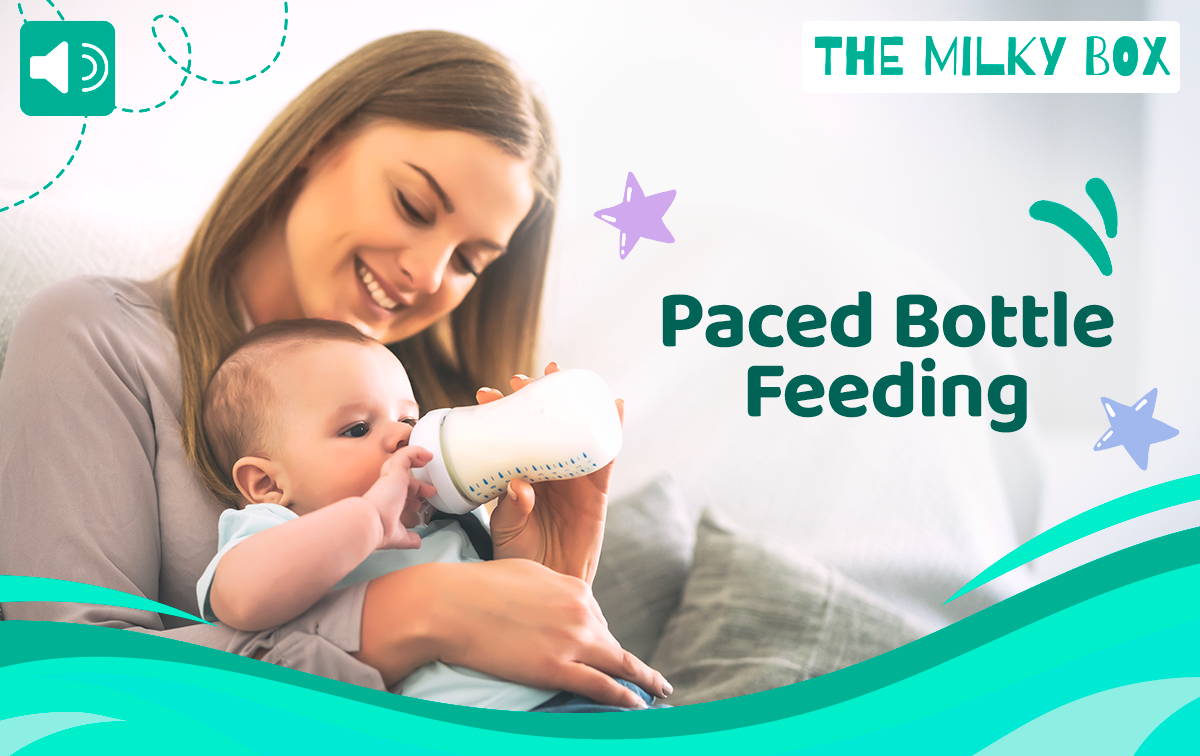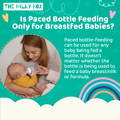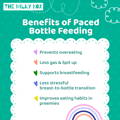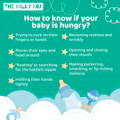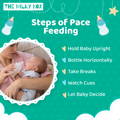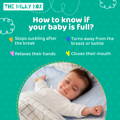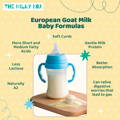When pace-feeding your baby, whether with expressed breast milk or formula, it’s a good idea to serve smaller portions. It can prevent wasting food and ensure your baby is hungry for their next feeding session. The latter can help your baby stick to a regular feeding schedule and develop good eating habits.
1. Small Bottle: Use a small 4oz. bottle with a slow-flow nipple.
2. Hold Upright: Hold your baby in an upright position, supporting their head and neck with your hand, not your arm.
3. Bottle Position: Point the bottle straight toward your baby’s mouth, with just a little milk in the bottle’s nipple.
4. Initiate Feeding: Gently touch your baby’s upper lip with the nipple to encourage them to open wide. Let them pull the whole nipple into their mouth, like in breastfeeding. Don’t push it in.
5. Maintain Angle: Keep the bottle almost level. Raise the bottle’s bottom just enough for milk to fill the nipple. As you go along, let your baby lean back a bit to keep the nipple filled.
6. Take Breaks: If your baby doesn’t take a break after three to five sucks, tip the bottle down a bit. This slows milk flow but still keeps your baby comfortable.
Give your baby time to swallow and breathe. If they don’t pause when you tilt the bottle down, take the bottle’s nipple out briefly.
7. Let Baby Decide: Let your baby decide when they’re finished. They may not need all the milk or formula, so don’t force it.
8. Watch Cues: Watch for cues that your baby is done or needs a break, so they feel full and avoid overfeeding.
9. Remove the bottle in case your baby is:
● Drinking milk quickly without breaks
● Spitting out milk
● Widening their eyes
● Becoming stiff in their arms and legs
● Flaring their nostrils
● Lips turning blue

